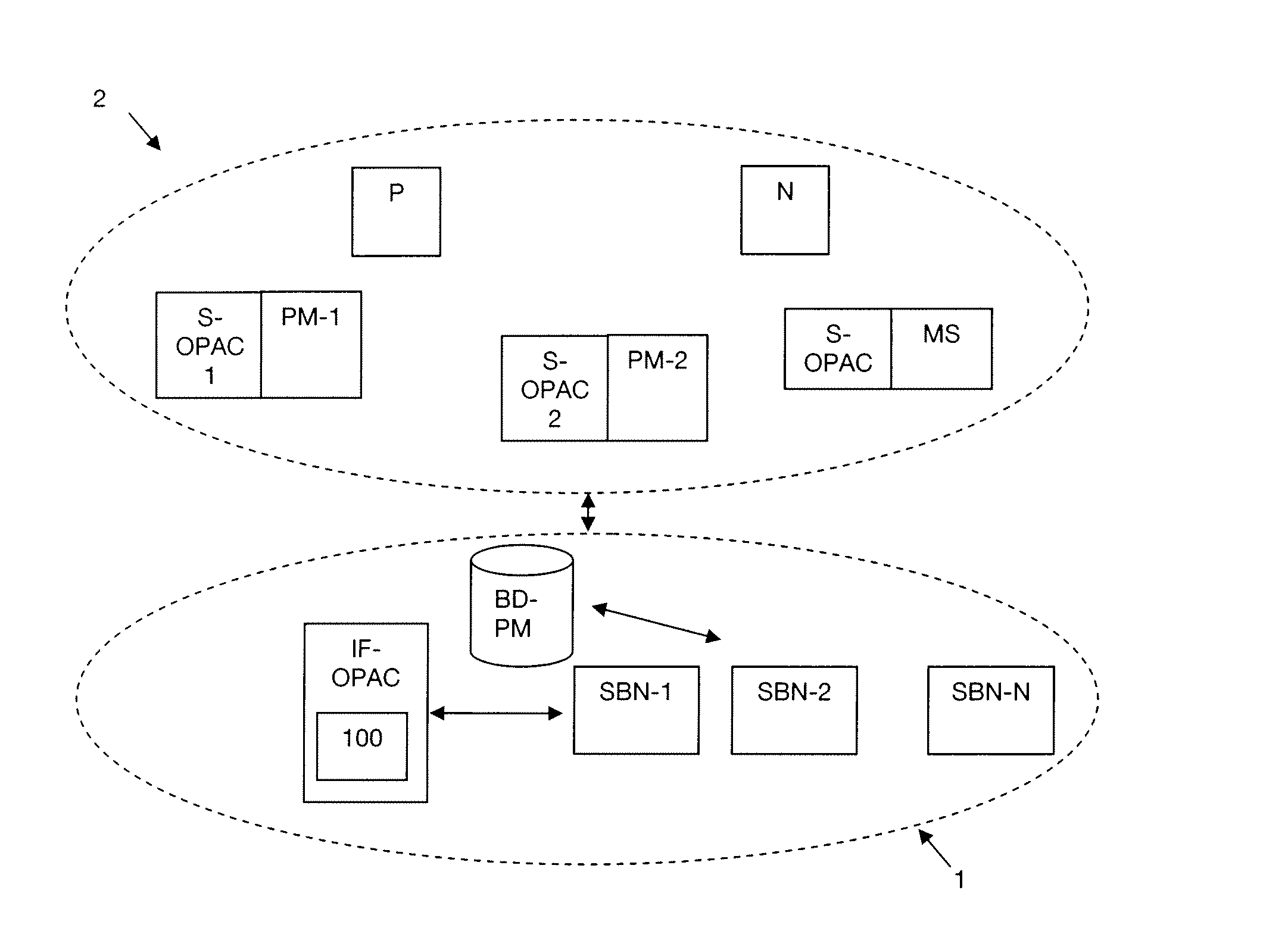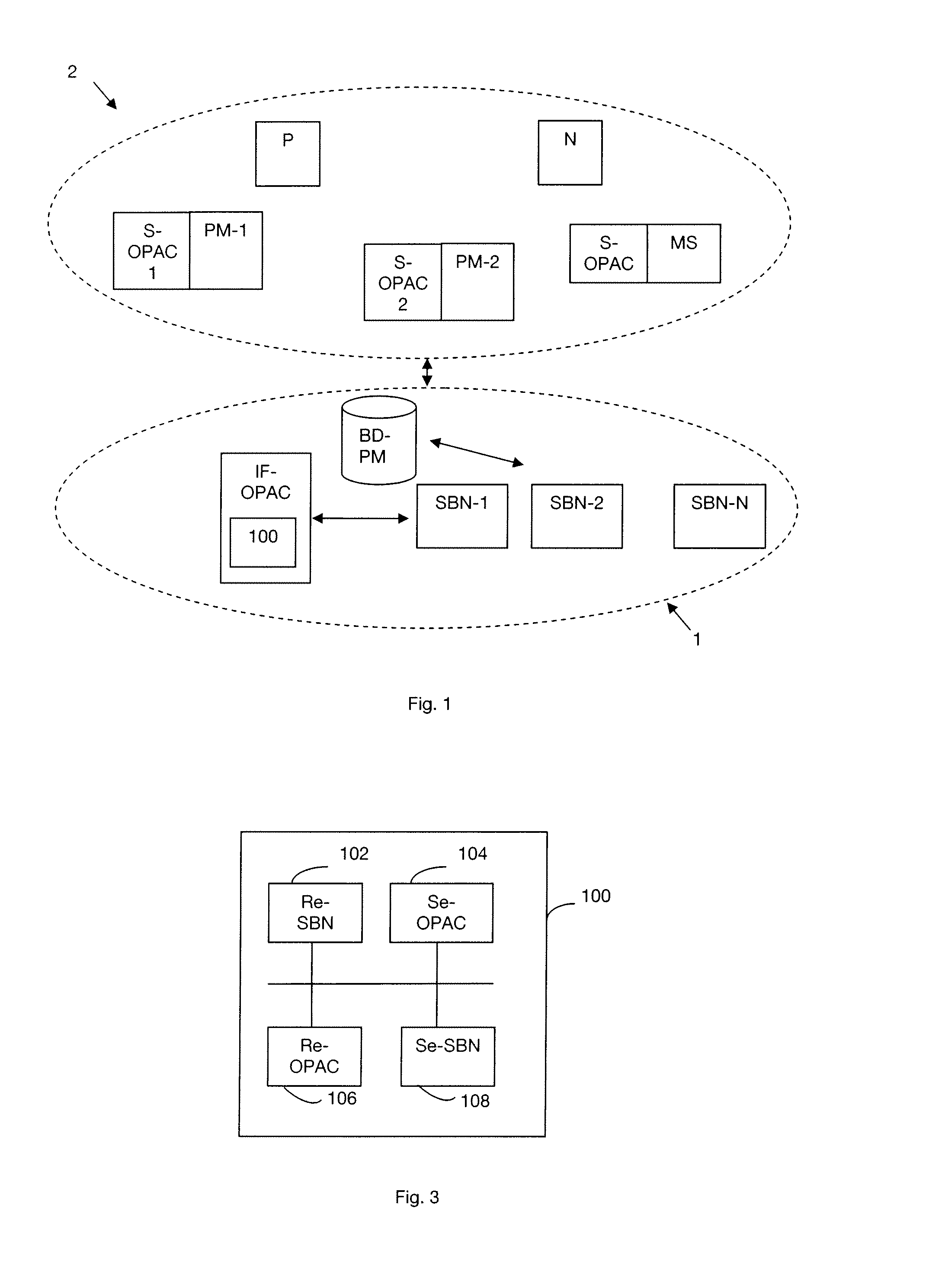Technique for controlling access by a client entity to a service
- Summary
- Abstract
- Description
- Claims
- Application Information
AI Technical Summary
Benefits of technology
Problems solved by technology
Method used
Image
Examples
Embodiment Construction
[0045]A system 1 for determining a chain of processing modules for providing a service to a client entity in a communications network 2 is shown diagrammatically in FIG. 1. An overlay network is a particular communications network. Below, the terms are used interchangeably. The system 1 comprises a plurality of service access nodes SBN-1, . . . , SBN-N for “service bootstrap node”. A terminal N is also shown in FIG. 1. Below the term “client entity” is used to designate the terminal N or the user U of the terminal N. In an embodiment of the invention, the system 1 also includes an access control entity referenced IF-OPAC for “interface overlay proxy access control”, which entity is administered by the operator giving access to the service. This access control entity IF-OPAC includes in particular a device 100 for controlling the access of a client entity to a service. The system 1 also includes a database processing module BD-PM that stores the processing modules made available by e...
PUM
 Login to View More
Login to View More Abstract
Description
Claims
Application Information
 Login to View More
Login to View More - R&D Engineer
- R&D Manager
- IP Professional
- Industry Leading Data Capabilities
- Powerful AI technology
- Patent DNA Extraction
Browse by: Latest US Patents, China's latest patents, Technical Efficacy Thesaurus, Application Domain, Technology Topic, Popular Technical Reports.
© 2024 PatSnap. All rights reserved.Legal|Privacy policy|Modern Slavery Act Transparency Statement|Sitemap|About US| Contact US: help@patsnap.com










